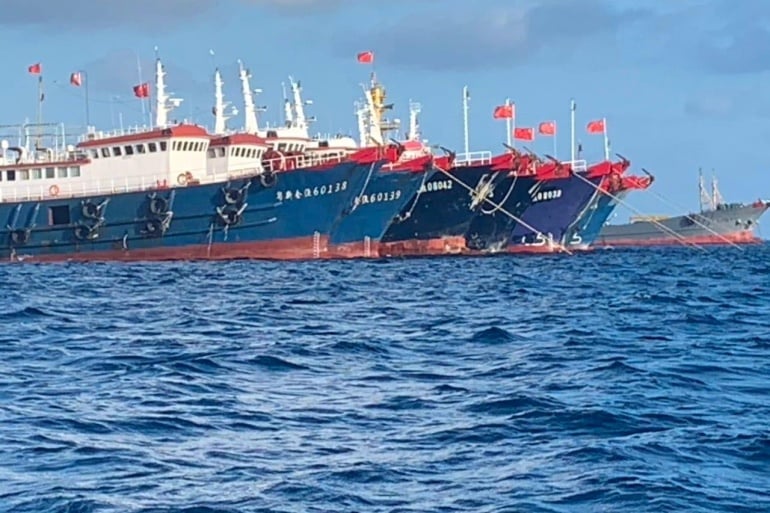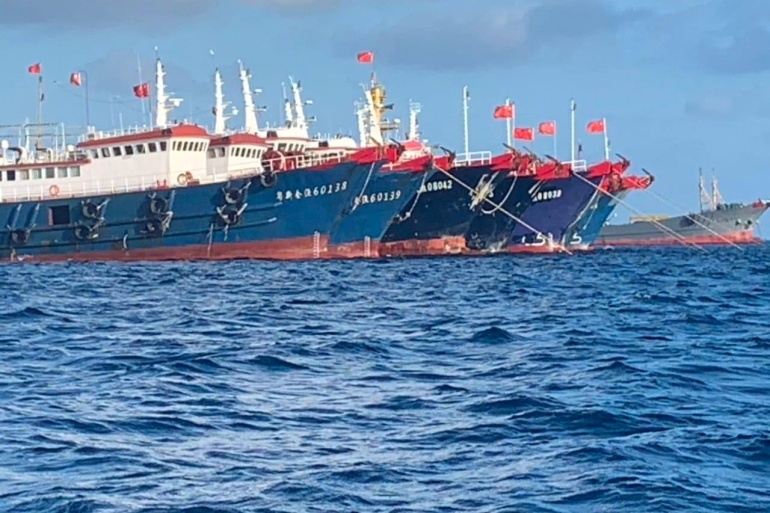
Apart from military power, China has been using a variety of political, economic and legal tools to further gain control of the South China Sea (also known as the East Sea).

The recent change in the Chinese Maritime Traffic Safety Law (MTSL) is another step in its new “grey area” strategy, which raises serious concerns from neighboring countries in the region. In general, the new law tightens the control of China over vessels that pass through the Chinese territorial sea. However, due to China’s current claims over the Paracel and Spratly Islands, the free passage of vessels in international waters is also affected.
The international legal norm regarding innocent passage through territorial seas
Under the United Nations Convention on the Law of the Sea (UNCLOS), the sovereignty of a coastal state extends beyond its land territory and internal waters to an adjacent belt of sea, described as the “territorial sea”. The territorial sea may extend at a maximum of 12 nautical miles from the baseline of the coastal State . For islands belonging to a state, the regime of the territorial sea is also applied. It should be noted that an island is defined as an area of land satisfying the following conditions: formed naturally, surrounded by waters and be above water at high tide. The passage of a vessel passing through the territorial sea of another state is deemed innocent as long as it is not prejudicial to the peace, good order or security of the coastal state. UNCLOS also provides a general list of criteria to define innocent passage . Furthermore, UNCLOS also grants the coastal state the right to take necessary means to prevent and curb any passage that is not innocent . However, there is no specific guidance on such means and the state may exercise its sovereignty in issuing and enforcing regulations related to the matter.
The legal requirement of China’s new MTSL regarding the innocent passage through territorial seas
– The increase of Chinese control in South China Sea as prescribed by the new law
The earlier 1992 Law on the Territorial Sea and Contiguous Zone of China provided that foreign military ships needed permission to enter its territorial waters, submarines needed to transit on the surface; and ships carrying toxic material had to have required documentation and take precautions in handling cargo. The new MTSL makes several changes to these requirements, in which foreign operators of submersibles, nuclear vessels, ships carrying radioactive materials and ships carrying bulk oil, chemicals, liquefied gas and other toxic and harmful substances to provide detailed information including the vessel name, call sign, current position, cargo, port of call and estimated time of arrival upon their visits to Chinese territorial waters. The new MTSL grants China the power to establish ship routing and reporting areas, traffic control areas and restricted navigation areas. Ships passing through important fishing waters, areas with dense maritime traffic, ship routing areas and traffic control areas must strengthen their lookout, maintain safe speeds, and comply with special navigation rules. The new MTSL enhances the enforcement of the revised China Coast Guard Law, passed in February 2021. It asserts that foreign warships and other government vessels used for non-commercial purposes which violate Chinese laws and regulations while engaged in innocent passage shall be dealt with all necessary means in accordance with “the relevant laws and administrative regulations” . In general, the new law does not directly oppose the provisions of UNCLOS. The new law sets ambiguous definitions on applicable types of vessels and circumstances that may be threats to China’s national security. Although, this scope, under loose interpretation, may include any type of vessels that the Chinese authority deems “dangerous” at their own discretion, including fishing boats, as well as coast guard ships of neighboring nations. However, it is risky for China to restrict the right of innocent passage exercised by foreign vessels in its territorial sea. Heavy requirements on the announcement and information submission can cause challenges or blocks to the passage from those vessels. The enforcement and sanctions imposed under “the relevant laws and administrative regulations” are also ambiguous and too wide ranging. It can be considered another restriction of the innocent passage right provided under UNCLOS .
– The unlawful claim of China in the South China Sea
As the applicable geographical area of the new MTSL is China’s territorial sea, China’s wrongful claim of this area is the main reason why the new law poses much restriction on the free innocent passage in South China Sea. The MTSL applies to areas of sea within China’s jurisdiction . However, what areas are Chinese territorial sea are unclear. If China abides with international law and exercises its power in the legitimate territorial sea within the 12-nautical-milearea of its shore baseline, the new MTSL would not raise that much concern. However, China has illegally occupied multiple islets in the Paracel and Spratly Islands and developed them into military bases with regular stationed troops. Such facilities are also equipped with air defense systems, strategic runways and piers for naval vessels. By conducting such actions, China has been attempting to convert the artificial islets into landmass and treat them as islands. China has tried to base such artificial islets to establish the territorial waters – a 12-nautical-mile surrounding area. This is a blatant attempt to circumvent the regulations of UNCLOS. First, UNCLOS only recognizes the territorial sea area established based on naturally formed, surrounded by waters and be above water at high tide . Meanwhile, apart from the illegal occupation, China has changed the status of many islets and recognize these islets as the legitimate ground to establish territorial sea area thereof to impose passage restrictions, despite UNCLOS. Second, in the dispute brought by the Philippines against China in 2016, the special arbitral tribunal already dismissed China’s claims over the generation of maritime zones based on such artificial islands. China, however, does not recognize the ruling and has continued with their military expansion in the area.
– The gauge of the new law’s enforcement
The United States (“US”) Navy’s 7th Fleet announced of the entry of an US warship close to Mischief Reef (called “Da Vanh Khan” in Vietnamese), which is a portion of the Spratly Islands and has been illegally claimed and occupied by China. On 8 September 2021, just a week after the new MTSL came into force, the US warship was operating and sailing near Mischief Reef, where the territorial sea area was claimed by China. The 7th Fleet also denied that it was chased away by Chinese warships and aircraft. Despite not being a party to UNCLOS, the US stated that the natural state of Mischief Reef is not entitled to a territorial sea and, therefore, the land reclamation efforts, installations and structures built on this feature do not change its characterization under international laws.
Source: Lexology
Related Posts
Is China Grabbing The South China Sea?
In the geopolitical theater of the South China Sea, the awakening of China as a maritime power has..
Military Challenges to China's South China Sea..
The South China Sea remains a focal point of international maritime contention, where rising..
Intelligence Brief: China Controls the South..
The South China Sea, now essentially controlled by China, sees several million barrels per day of..



